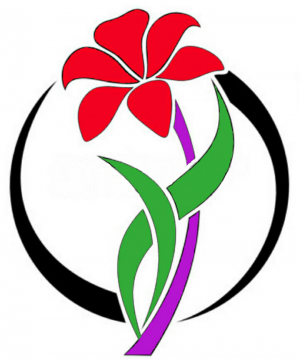Getting the Words Out
By: James Swift
UncommonJournalism@gmail.com
@UNJournalism
At first glance, the dark green composition book resembles any other. But inside, there are no scientific equations hastily scrawled in graphite, or periodic table abbreviations etched in ink. Instead, the notebook is filled with numerous heartfelt poems, written by young people held in detention facilities.
“When I think of home, sometimes I want to escape,” an author named TD writes. “Street fights between people and even a bloody face…but my home is my home, and I will always love this place.”
In a poem titled “America’s Beauty Gone,” JN bemoans a nation’s downfall. “All her sadness and tears, washes her makeup away,” the penultimate verse states. “Showing all the emotional scars, of the children she once lost.”
In “My Perspective on Freedom,” JG writes of a struggle for independence, describing liberty as a shadow stuck between a juvenile court judge’s rulings and a probation officer’s recommendations.
“We juvenile delinquents tend to think our words are unheard and pointless,” the poem reads, “though our emotions show anger and sorrow, loudly to be defined.”
Created by San Francisco-based WritersCorps, the Words Within the Walls journal stems from the work of teaching artist Anhvu Buchanan, who was placed by WritersCorps to teach at the Juvenile Justice Center (JJC). Buchanan put together a prototype journal containing writing prompts and various poems written by students at the juvenile facility.
“Over the years an increasing number of my students at the Juvenile Justice Center would constantly ask me if I could bring them a yellow legal pad to write in during their free time,” Buchanan told Uncommon Journalism. However, he noted that many students still struggled with their writing, even when supplied with journals of their own. “Although they had the paper in front of them,” he said, “they still needed that quick spark of inspiration.”
His third and final year teaching at the JJC, Buchanan decided to pursue a project that would jump start his students’ creativity and encourage them to express themselves through the written word. Not only would Buchanan’s project serve as a journal -- complete with prompts, ideas and topics that would give students subjects to mull and write about -- but also as a collection of works penned by students themselves.
Putting the Journal Together
“The journal would become an anthology that would feature some wonderful poems that the students have created throughout the year,” he said. “They would be able to put the pencil to the paper and express themselves in the form of poems, stories, letters, songs and thoughts in the journal.”
Throughout his final year at the JJC, Buchanan set aside his students' strongest poems, as well as the poems that best connected to particular prompts or emotions.
“At the end of the year, when we were at the editing phase, I had a stack of poems from the entire year to sift through and determine which ones best represented the voices and stories of the students at the JJC,” he said. The prompts he included in the journal, he said, were all prompts that he had used during his stay at the facility.
“I wanted to leave behind a bit of myself with the school and the future students there,” he said. “I also chose these prompts because I felt they were not only different and engaging but that they were accessible to anyone, not just ‘poets.’”
The journal, Buchanan said, impacted many of his students. “I noticed that not only were they using the journal to write their own songs, letters and ideas, but they were also writing to the prompts, which really made me happy,” he said.
By writing down their thoughts and feelings, he said his students gained both confidence and self-esteem. Additionally, by having their poems and stories printed and distributed to others, Buchanan said his students felt their work had been validated. “The students who had poems published were really grateful,“ he said. “They couldn’t wait to show their friends and family.”
Going National
After Words Within the Walls was published by WritersCorps, teachers at other juvenile facilities began requesting copies for their students. Eventually, the demand for the journal would exceed 5,000 copies, with more than 30 programs -- including juvenile halls stretching from Santa Cruz, Calif. To Brooklyn, N.Y. -- clamoring for the workbook
Gearing up for a second printing run, WritersCorps has turned towards the crowdfunding site Indiegogo to help insure as many copies of Words Within the Walls are distributed as possible.
“Once we realized how strongly Words Within the Walls resonated with the students at the Juvenile Justice Center here in San Francisco, we wanted to find a way to make this resource available to incarcerated youth everywhere,” San Francisco WritersCorps Program Manager Melissa Hung told Uncommon Journalism.
Under the crowdfunding campaign, she said her organization is aiming to raise $10,000.
“This will fund the costs of printing 5,000 journals and sending them to 34 juvenile hall schools and programs for incarcerated youth or formerly incarcerated youth across the country,” she said.
A list of all of the programs seeking Word Within the Walls journal is listed on WritersCorps’ Indiegogo page. “These are programs that had either heard of the journal and requested copies from us, or that we had reached out to,” Hung said.
“It made sense to partner with organizations that are already doing similar work and to share networks as much as possible,” she continued. “For example, The Beat Within is also based here in San Francisco and is a perfect partner for this project.”
Funders have the option of selecting one of eight “perks,” ranging from a $5 acknowledgement with “literary flourish” on the organization’s blog and Twitter account to a $1,000 personalized writing workshop that, if need be, can be conducted via Skype or Google Hangout.
If the organization exceeds its $10,000 target, additional copies of the journal will be printed. If the total donation sum is below the targeted goal, WritersCorps will publish and ship out as many copies as funding permits.
The 30-day crowdfunding project will conclude on May 8, 2014. As of mid-April, the organization has collected approximately one-fifth of its desired total.
Why Words Matters
As his students did most of their writing outside of class, Buchanan believes that the journal has helped provide some young people with a proper outlet for their emotions -- including their hostilities.
“I think it helps them really channeling this anger of their unfortunate situations in a really positive way,“ he said, “which in turn affects the attitude they bring to school that day.”
Having writing programs at detention facilities, he said, are critical to successful juvenile rehabilitation.
“My goal throughout my three years teaching was to change the perception of incarcerated youth,” he said. “I felt as though once they become students there they become labeled and branded a certain way. I think that they are entirely aware of this and it really affects how they perceive themselves.”
Writing programs, alike the WritersCorps program at the JJC, can help youths in juvenile facilities change their negative self-perceptions, Buchanan added.
“I think it gives them the time and space and opportunity to really flip everything on its head and tell the world that they are not just students,” he concluded, “but they are creative artists with stories that need to be told and heard.”
Uncommon Journalism, 2014.





Comments
Post a Comment